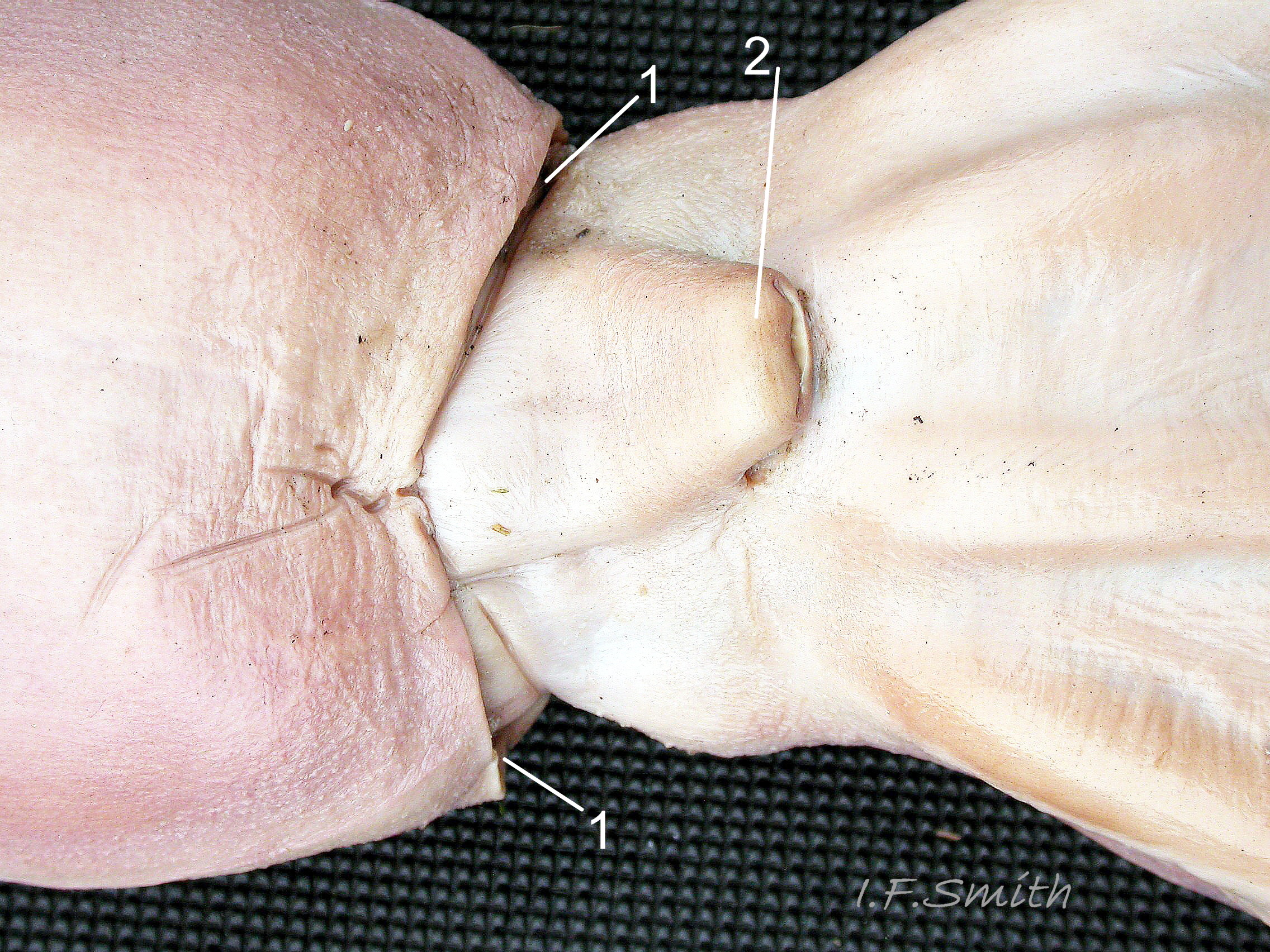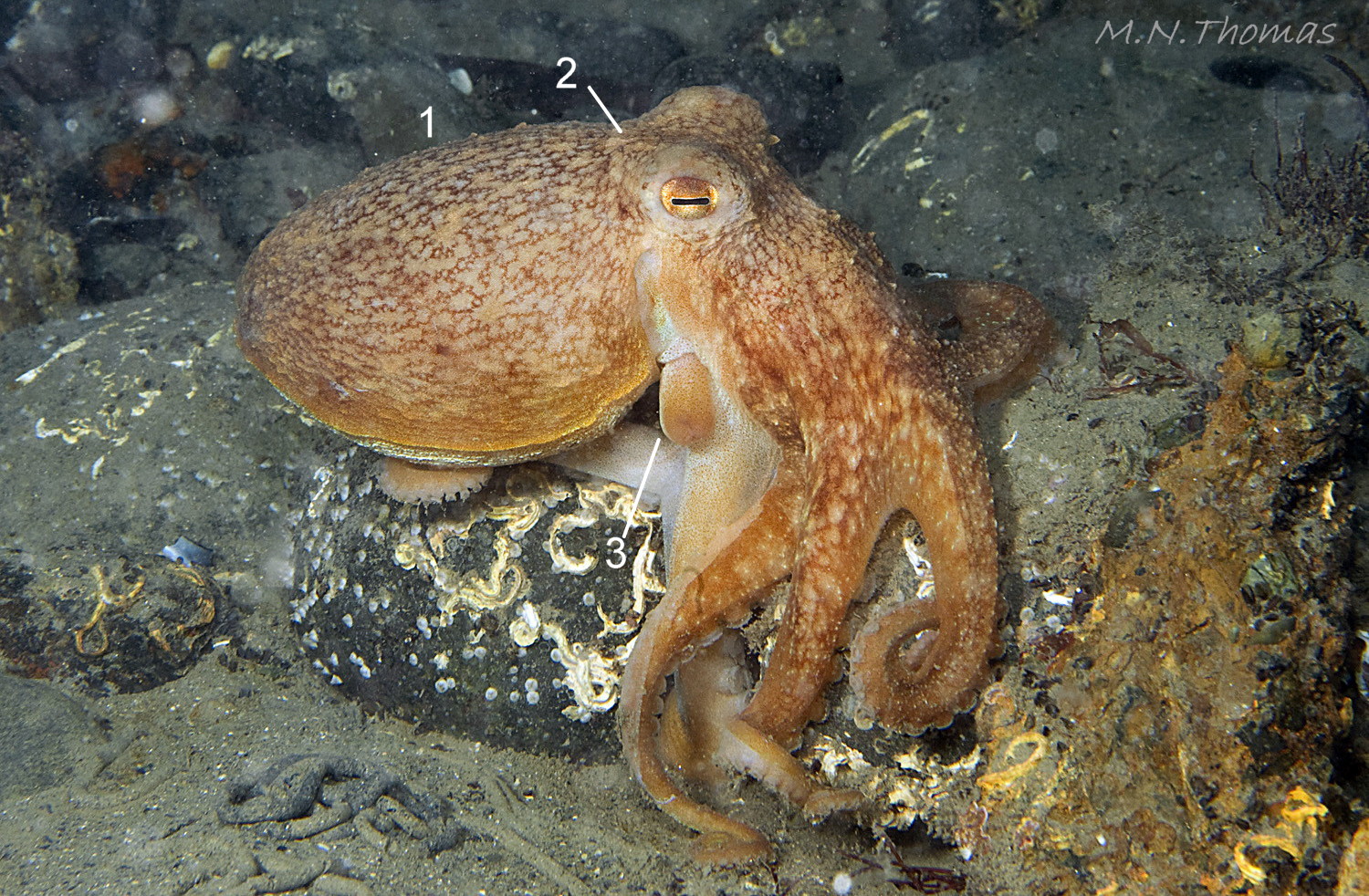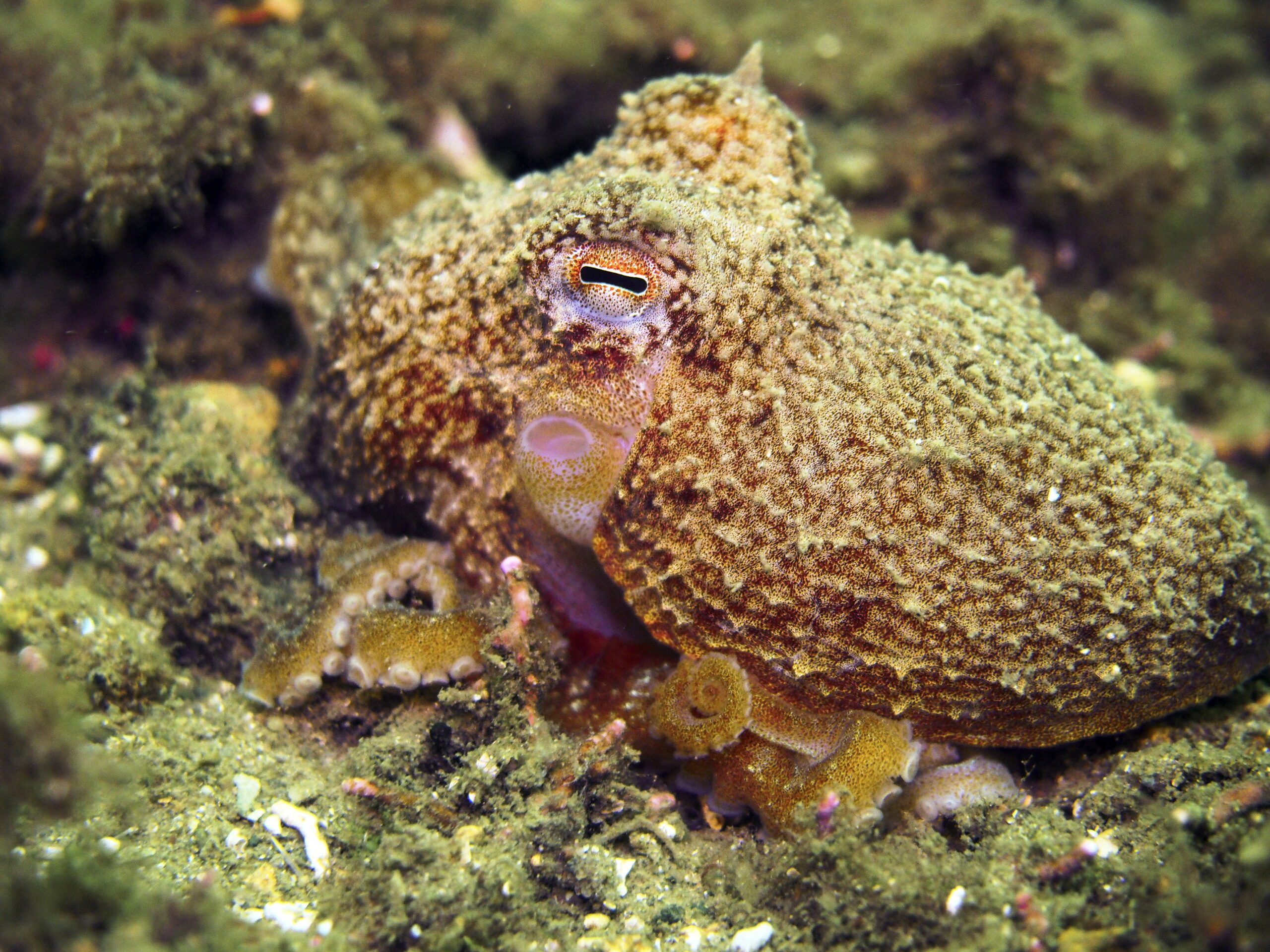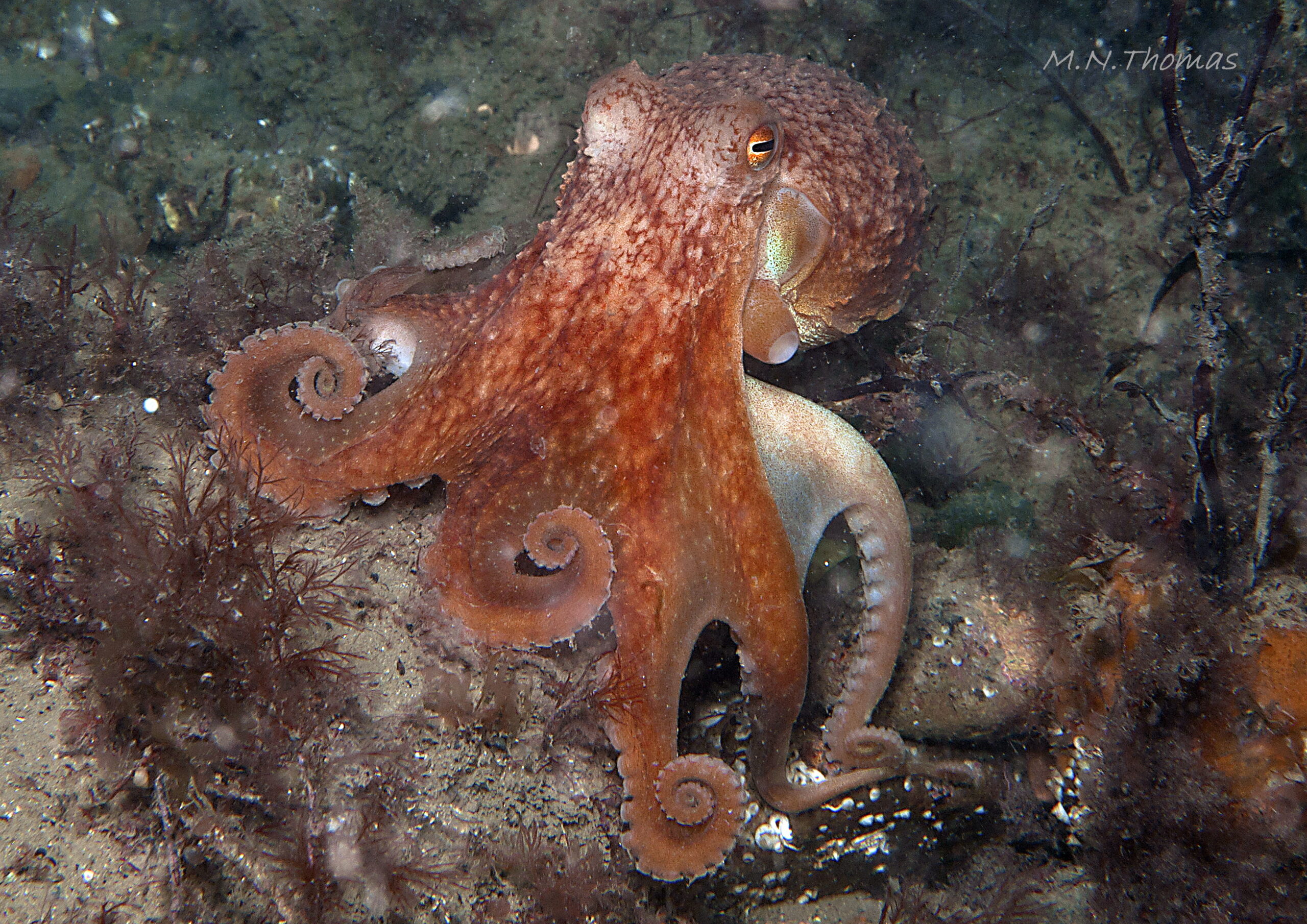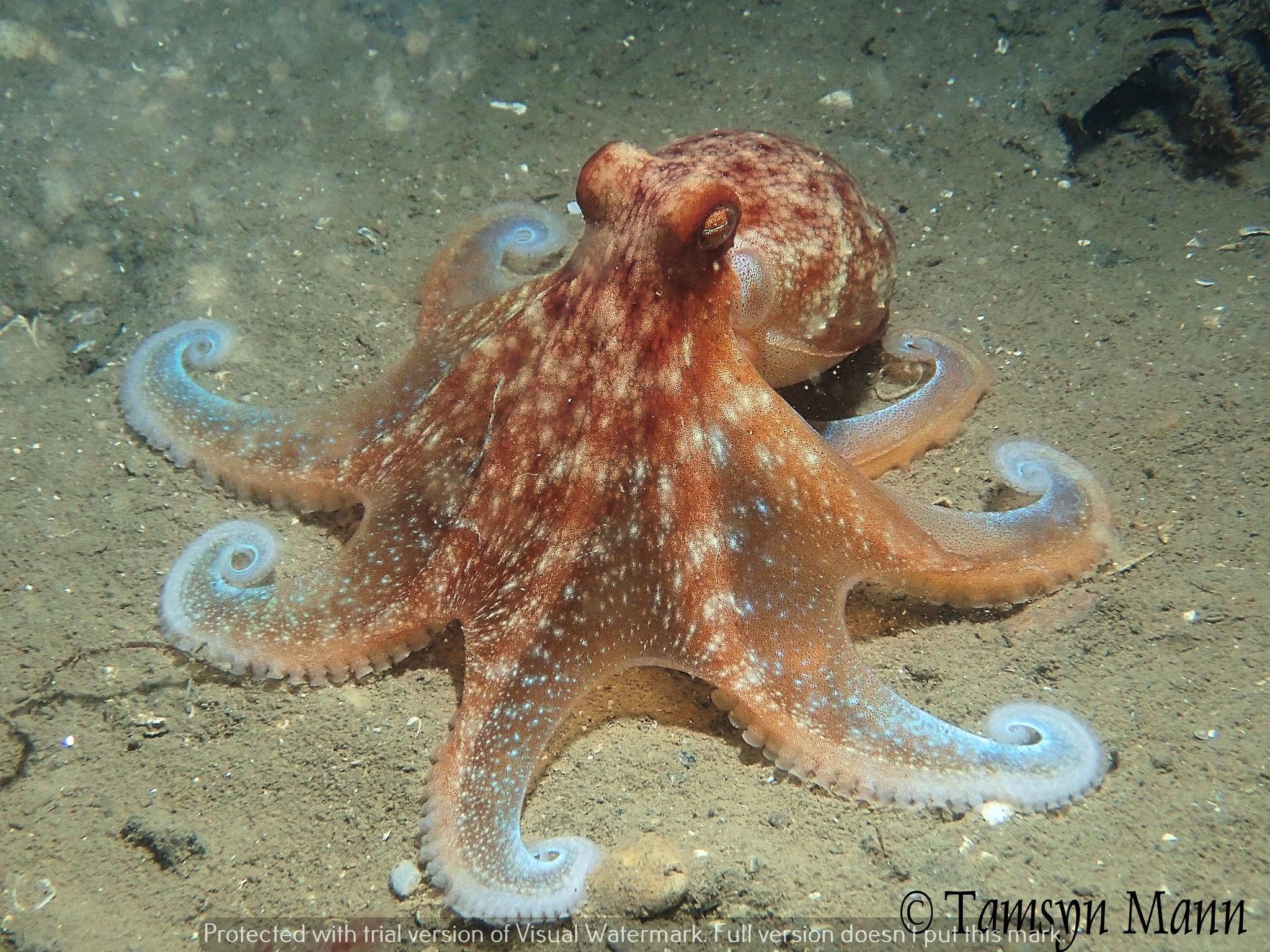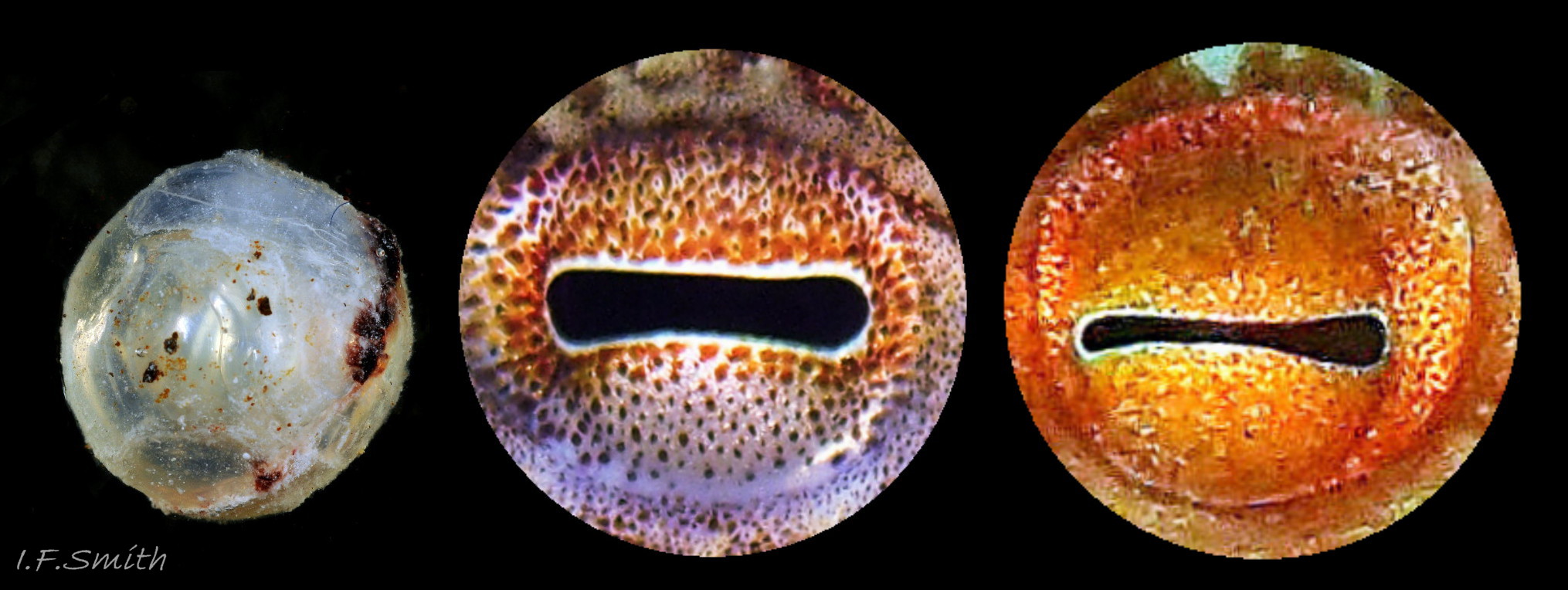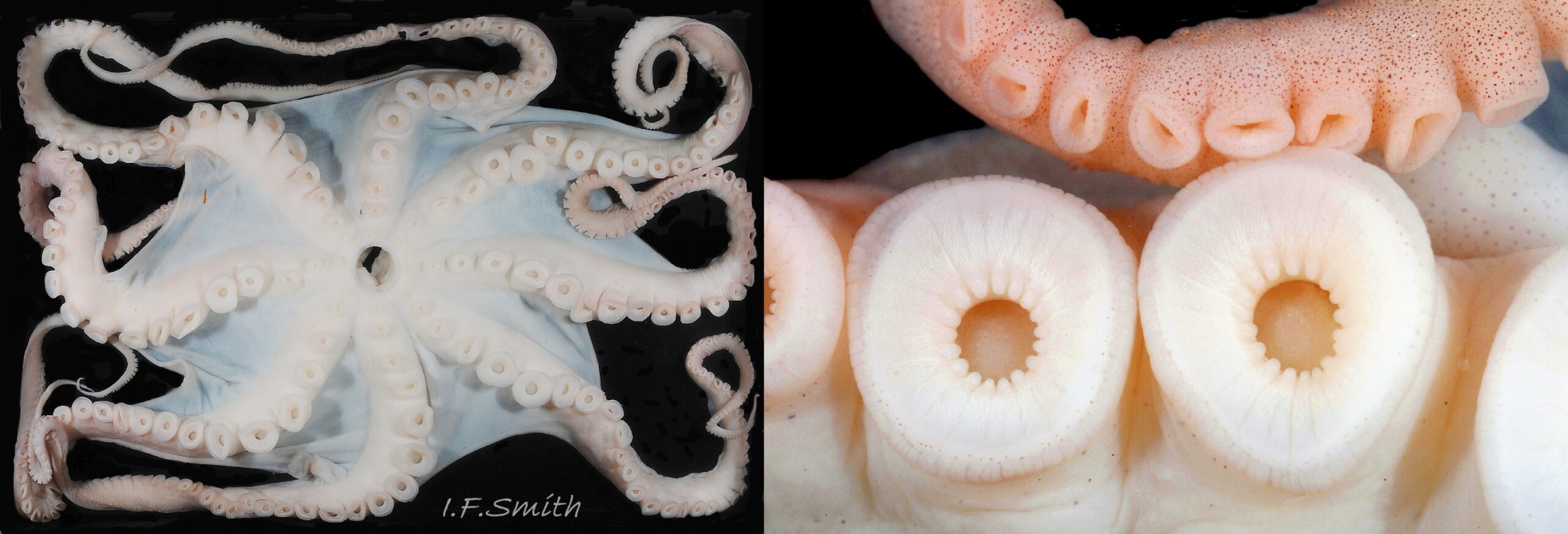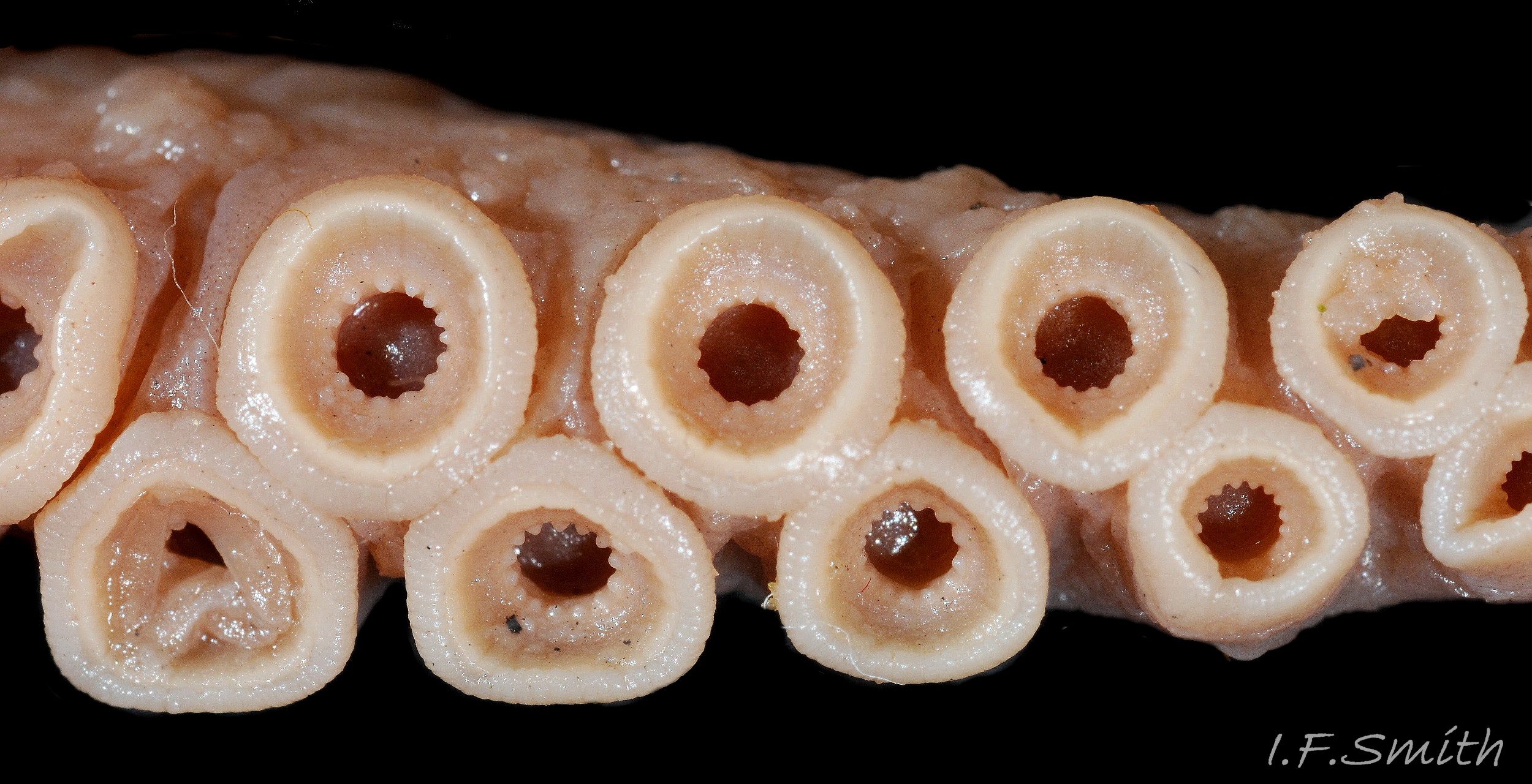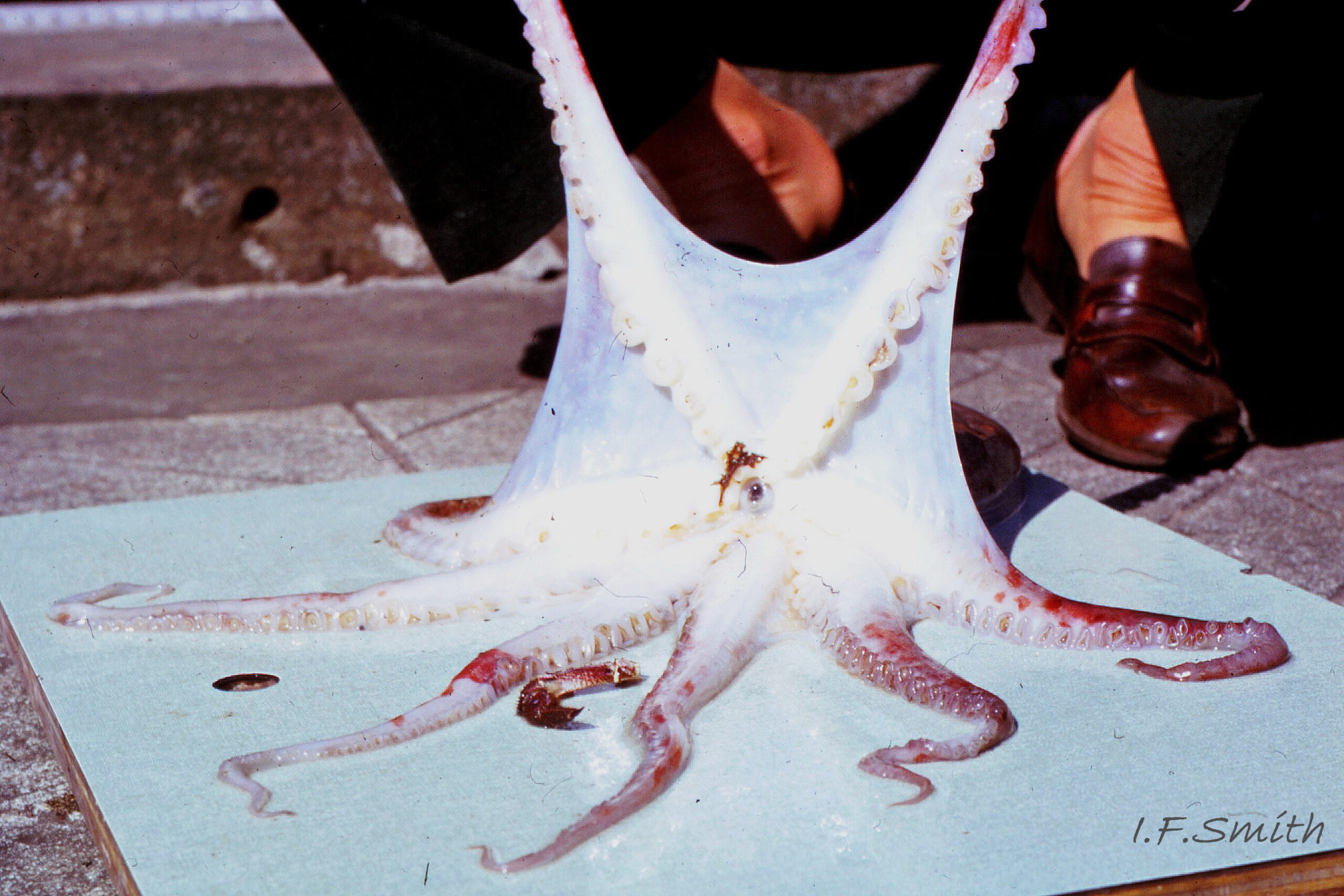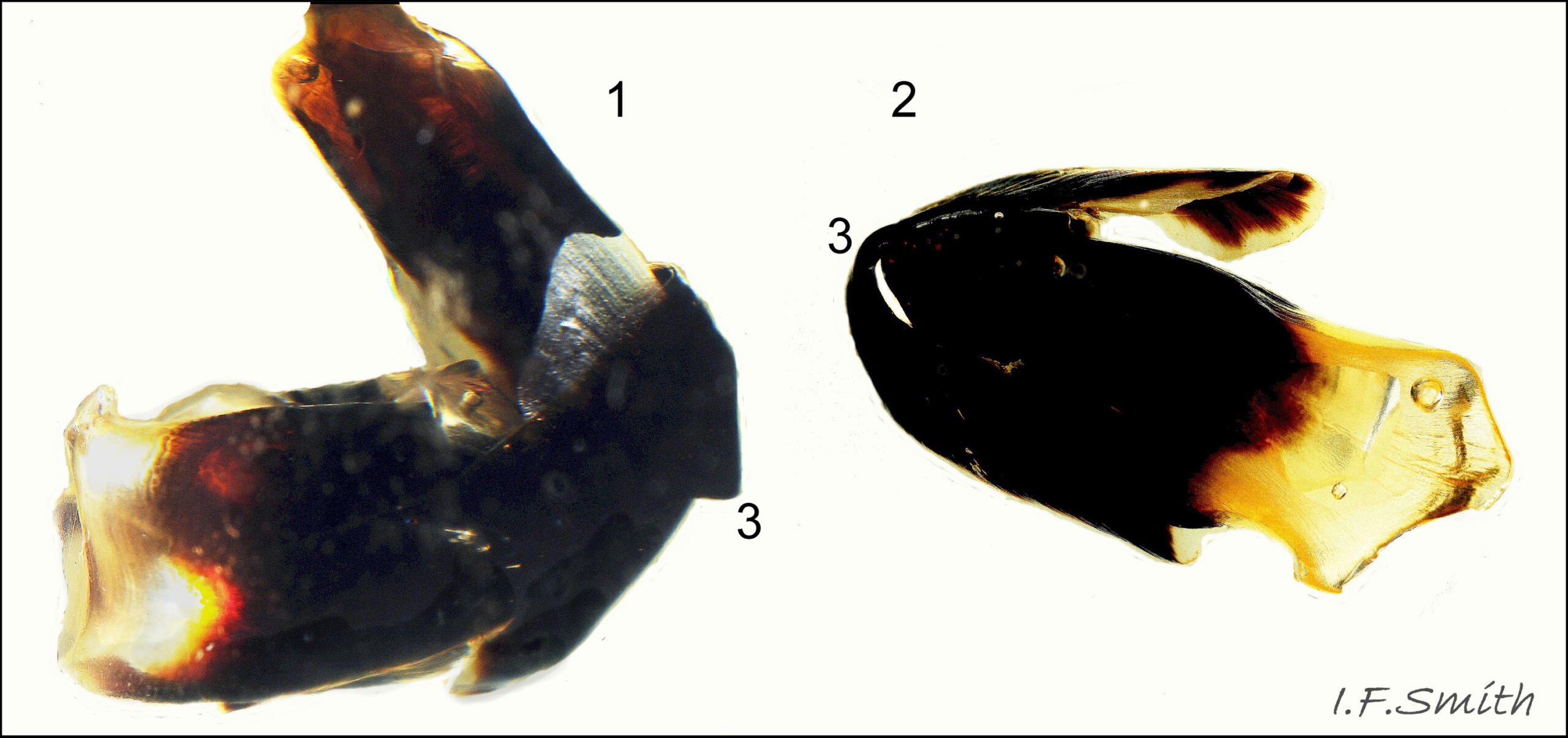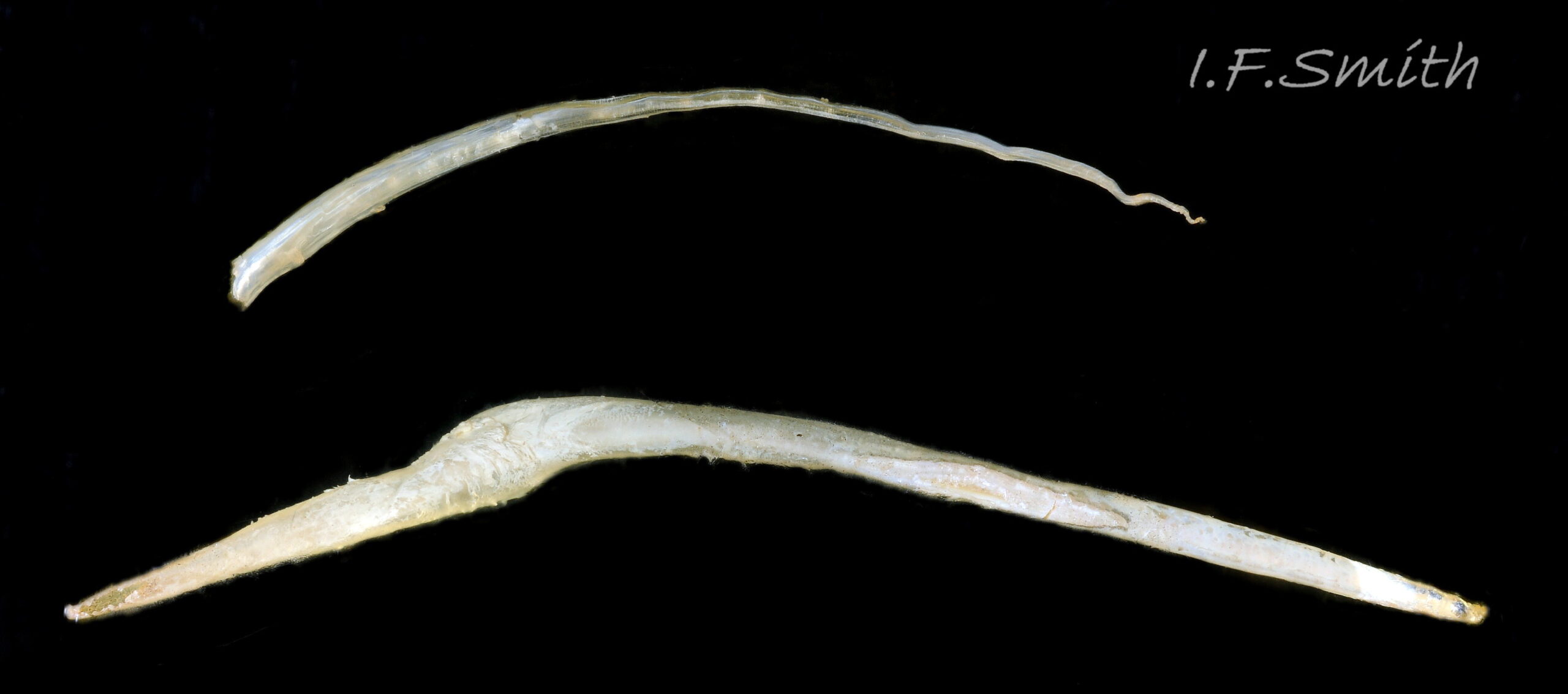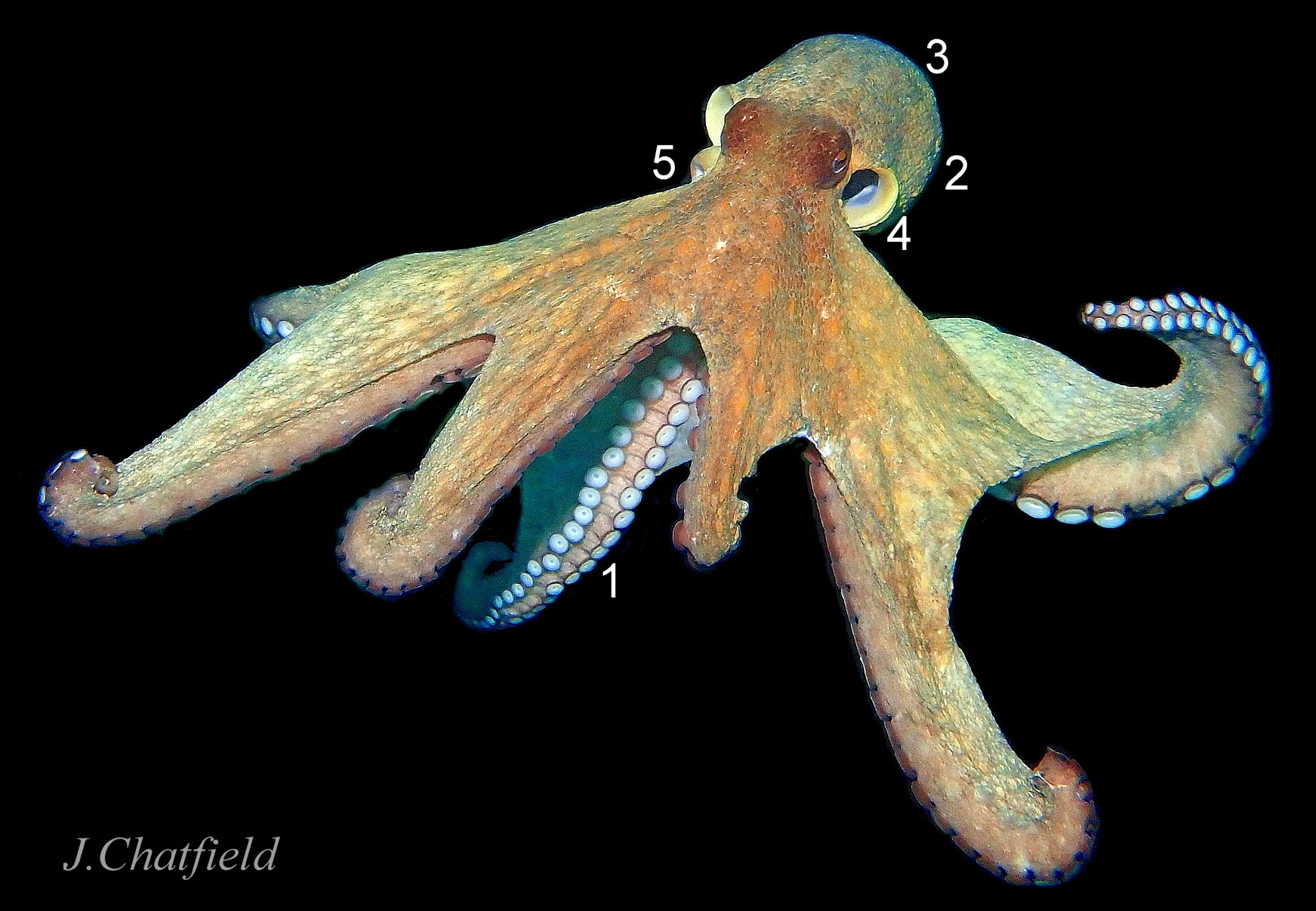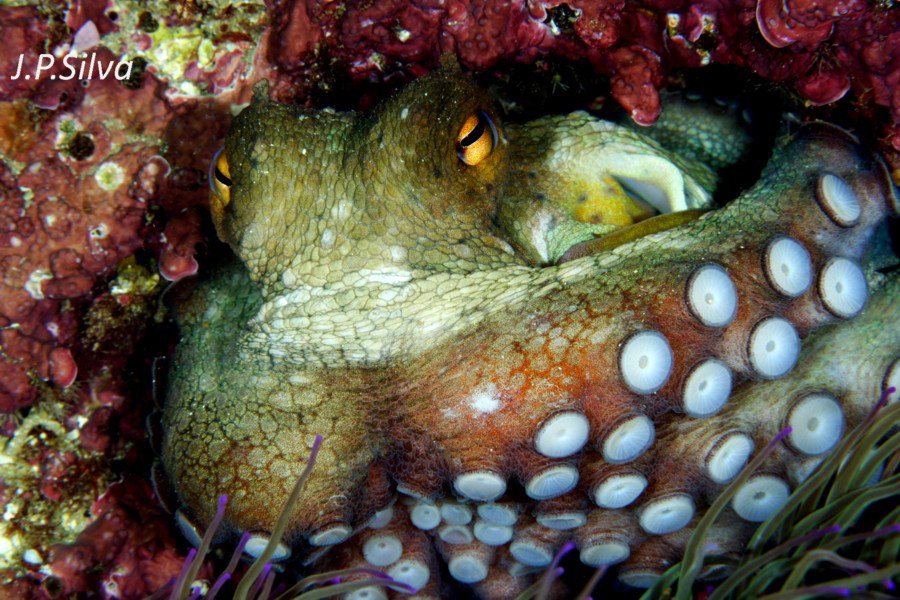Click image to enlarge with full caption. Main text below slider.
Eledone cirrhosa (Lamarck, 1798)
PDF available at www.researchgate.net/publication/370476819_Eledone_cirrho…
Synonyms: Sepia octopodia Linnaeus, 1758; Octopus cirrhosus Lamarck, 1798; Eledone aldrovandi Montfort, 1802.
Current taxonomy: World Register of Marine Species
www.marinespecies.org/aphia.php?p=taxdetails&id=140600
Vernacular: Curled octopus, Lesser octopus (English); Squid (Orkney); Octopws crych (Welsh); Pulpo blanco (Spanish); Pieuvre blanche (French); Moscoctapoda (Greek); Moscardino bianco (Italian); Qarnit (Tunisian Arabic); Ahtopot (Turkish).
GLOSSARY BELOW
Description
E. cirrhosa has a usual maximum length of 400 mm and weight of 1.2 kg (Roper et al.,1984), but it can grow to 660 mm and 1.41 kg 01 Eledone cirrhosa. The mantle is an oval bag that is fused with the head dorsally and open ventrally with an exhalant respiratory funnel which can be extended at varying angles 02 Eledone cirrhosa & 03 Eledone cirrhosa . The mantle surface can be varied from almost smooth to tuberculate 04 Eledone cirrhosa, but not with pronounced lobes.
The ventral surface is white, hence the Spanish and French vernacular names “blanco” and “blanche” 01 Eledone cirrhosa, and is clearly demarcated from the dorsum by a ridge around the lateral periphery of the mantle 05 Eledone cirrhosa . The dorsal surfaces of the mantle, head and arms are usually terracotta to orange-red 06 Eledone cirrhosa and sometimes have white patches and mobile red blotches 07 Eledone cirrhosa . Sometimes the dorsal colour extends faintly onto the ventral surface of the arms, but the suckers usually remain entirely white 06 Eledone cirrhosa .
The head has large, highly-developed, laterally oriented eyes 03 Eledone cirrhosa on a par with mammalian eyes, with a lens and horizontal slit pupils which can dilate and contract 08 Eledone cirrhosa .
The eight arms each have a single row of suckers 09 Eledone cirrhosa but, on slender tips when contracted, especially on preserved specimens, they sometimes deflect alternately to right and left to give an almost double row effect 10 Eledone cirrhosa . On males, the third arm on the right is 69% to 76% of the length of the other arms. Its tip is hectocotylized (broadened to adapt it for transfer of spermatophores into the female) (Roper et al.,1984). The arms are linked along the proximal third by a web 11 Eledone cirrhosa and there is a black chitinous “parrot’s-beak” jaw where they meet 12 Eledone cirrhosa . The only other hard body parts are slender flexible “bones”; vestiges of the ancestral internal shell 13 Eledone cirrhosa .
Key identification features
Eledone cirrhosa
1) Eight equal arms; males have one arm shortened, which is used for copulation.
2) Each arm has a single rows of suckers 09 Eledone cirrhosa , but slender tips may have an almost double row 10 Eledone cirrhosa .
3) Ridge around the lateral periphery of the mantle 05 Eledone cirrhosa & 07 Eledone cirrhosa . Surface nearly smooth 03 Eledone cirrhosa or tuberculate 04 Eledone cirrhosa .
4) Mantle is whitish ventrally and terracotta to orange-red dorsally 05 Eledone cirrhosa .
5) Usually, sublittoral but in some years many are cast up alive onto the shore by storm waves.
Similar species
Octopus vulgaris Cuvier,1797
1) Eight equal arms; males have one shortened arm used for copulation.
2) Each arm has two rows of suckers 14 Eledone cirrhosa COMPARE Octopus vulgaris .
3) No rim around the lateral periphery of the mantle. Surface texture varies from fairly smooth 14 Eledone cirrhosa COMPARE Octopus vulgaris to elongate lobes 15 Eledone cirrhosa COMPARE Octopus vulgaris .
4) Varied colours which can alter instantly; often purplish red on underside of arms including sides of suckers up to a dark rim around the white circular distal face of the suckers 16 Eledone cirrhosa COMPARE Octopus vulgaris .
5) Found living both littorally and sublittorally. In Britain, in unusually hot summers, only on south coast of England. In April 2023, all photographs of records on iNaturalist of O. vulgaris further north than the south coast of England were misidentified E. cirrhosa or unrecognisable cephalopods in poor condition.
Habits and ecology
E. cirrhosa is usually sublittoral, living on the seabed mainly to 150 m but occasionally to 500 m. Females predominate to about 80 m and males below 100 m (Roper et al.,1984). It travels on its arms. It can adjust its body shape to get through very narrow cracks and crevices just wide enough to allow passage of its ‘parrot beak’ jaws; its only hard parts apart from a couple of slivers of vestigial shell 12 Eledone cirrhosa & 13 Eledone cirrhosa .
Its favoured prey is crabs and lobsters, including those caught in lobster pots.
It envelops its victim with its arms and their basal web while it pierces the shell with its jaws and injects toxin to kill it and enzymes to digest it before the entire contents are sucked out, leaving an empty, intact exoskeleton.
Predators of E. cirrhosa include seals, dolphins and humans. Its colour and mantle texture can change rapidly to match its surrounds or express emotion. When faced by a large moving object, it may spread itself to look large, and assume pale and bright colours with dark around the eyes 07 Eledone cirrhosa . If the perceived threat increases, it jet propels water from its exhalent funnel 05 Eledone cirrhosa for rapid escape, often ejecting black ink to distract a predator.
Sexual maturity is usually reached when the mass of E. cirrhosa is between 400 g and 1000 g. Sexual activity is at its peak between July and September in Scotland (Boyle & Knobloch, 1983). In the western Mediterranean spawning is from May to September with a peak in July. The male uses a modified arm to deposit spermatophores into the female via her mantle cavity. The female attaches strings of 800 to 1500 grapelike eggs to the roof of a rock shelter and sits guard and tends them for about 100 days (at 16° C) until they hatch as miniature adults which drift in the plankton before settling the following year. The exhausted female dies after completing her maternal care. Life span is probably 2 or 3 years in the Mediterranean and longer in northern Europe where development is slower at lower temperatures (Roper et al. 1984).
Distribution and status
E. cirrhosa occurs from 67º N. in Norway and Iceland to the Mediterranean, but not the inner Baltic, GBIF map www.gbif.org/species/2289348 . In Britain, it is commonest in the north and is a pest species for lobster fishermen in Orkney, NBN UK map species.nbnatlas.org/species/NBNSYS0000175097 . It is often misidentified as Octopus vulgaris further north than that species’ occasional northern limit in hot summers on the south coast of England.
Acknowledgements
For use of images I thank James Chatfield, Tamsyn Mann,
Lisa Kamphausen www.flickr.com/photos/naturescot/ ,
João Pedro Silva www.flickr.com/photos/jpsilva1971/albums and
Mark N. Thomas www.flickr.com/photos/marknthomas/collections/
References and links
Boyle, P. R., 1986. A descriptive ecology of Eledone Cirrhosa (Mollusca: Cephalopoda) in Scottish waters. J. Mar. Biolog66, 855-865. www.cambridge.org/core/journals/journal-of-the-marine-bio… (extract)
Boyle, P.R. & Knobloch, D., 1983. The female reproductive cycle of the octopus, Eledone cirrhosa. J. Mar. Biolog 63, 71-83. www.cambridge.org/core/journals/journal-of-the-marine-bio… (extract)
Boyle, P.R. (ed.), 1983. Cephalopod Life Cycles, vol 1. Species Accounts. London: Academic Press Inc. (London) Ltd.
iNaturalist www.inaturalist.org/observations
Laptikhovsky, V. and R. Ourens, R. 2017. Identification guide for shelf cephalopods in the UK waters (North Sea, the English Channel, Celtic and Irish Seas). Centre for the Environment, Fisheries and Aquaculture Science, UK.
www.researchgate.net/publication/319626054_Identification… [accessed Apr 26 2023].
Roper, C.F.E., Sweeney, M.J. & Nauen, C.E., 1984. FAO species catalogue. Vol. 3. Cephalopods of the world. An annotated and illustrated catalogue of species of interest to fisheries. FAO Fisheries Synopsis, Nº 125 vol. 3: 277. Avaliable: www.fao.org/docrep/009/ac479e/ac479e00.htm
Marine Life Information Network (MARLIN) www.marlin.ac.uk/speciesinformation.php?speciesID=3248
Morton, J.E., 1967. Molluscs. London.
Yonge, C.M, & Thompson, T.E., 1976. Living marine molluscs.London
Glossary
cephalopod = a member of the class Cephalopoda, containing octopus, squid, cuttlefish, nautilus, and kin.
chitin = semitransparent flexible horny protein, formula (C8H13O5N)n.
chitinous = (adj.) made of chitin, or resembling chitin.
distal = away from centre of body or from point of attachment.
maerl = purple-pink, calcareous, coral-like algae which form a spiky substrate.
mantle = (of octopuses) sheet of tissue forming a bag containing the mantle cavity and most of the viscera and which, with the head and arms, forms the body.
mantle cavity = space within the mantle containing the gills and excretory and reproductive openings.
proximal = towards the centre of the body or point of attachment.
spermatophore = a package made of mucoprotein containing an ejaculation of semen.

